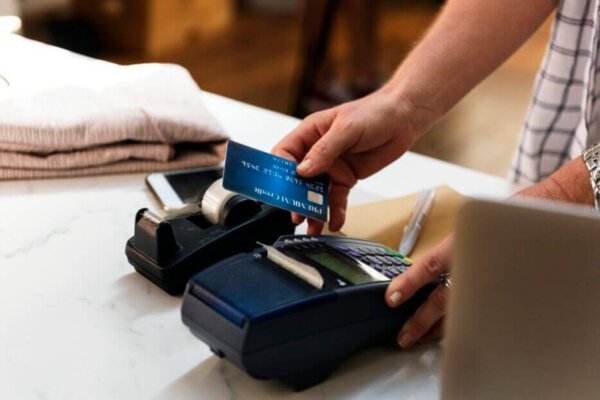
How Impulse Buyers Think and How to Convert Them
Learn what three actions you can take to compel impulse buyers to convert on your ecommerce site.
Brick and mortar store managers have leveraged the power of impulse buyers for years— e.g. the selection of quick-grab items lining the checkout queue.
Now ecommerce managers are beginning to catch on.
Those who “get it” are reaping big benefits in higher average order values and more. Since you’re reading this, I’m going to guess you’re someone who keeps learning and never stops optimizing.
Good for you.
First, a few stats:
- More than eight of ten shoppers admit to making a purchase on impulse; i.e. saw and purchased an item which they didn’t come looking for
- More than half say they’ve spent more than $100 on an impulse purchase
- One in five have spent over $1,000 on impulse
Would you agree that catering to impulse shoppers should be part of your sales strategy? In this article, I’ll show you how to get more sales by helping more people get what they didn’t know they wanted. Specifically, we’ll look at why impulse buying is important to your ecommerce business, how impulse buyers think, and how you can help them move from visitor to customer.
Impulse Buying Keeps Ecommerce Thriving
Impulse buying means making an unplanned purchase. Impulse buyers see something, want it, and get it. They don’t take time to stop and think about whether they should or should not spend the money.
Now I’m not encouraging you to take advantage of people or sell them things they don’t really want or need. Rather, by recognizing the reality of impulse buying and how impulse buyers think, you can help them make better decisions.
Some studies have attributed more than 40 percent of ecommerce purchases to impulse buying. This figure makes a strong case for the importance of the impulse shopper to the wellbeing of ecommerce.
Let’s take a look at how an impulse buyer thinks.
How impulse buyers think
According to the experimental psychologist, Ian Zimmerman Ph.D., “impulse buying tendency” is a personality trait whereby impulse buyers tend to possess certain common attributes.
Impulse buyers:
- are generally strongly concerned about image and status
- are usually concerned about social acceptance
- tend to be anxious and emotionally high-strung
- are often unhappy and down in their mood
- many times don’t consider consequences
Other researchers cite some additional drivers for impulse buying:
- Fear of missing out (loss aversion)
- The desire to acquire more things
- The desire to save time and money
- The need for instant gratification
- A focus on needs for the future self as drivers for impulse buying

How to convert impulse buyers
Think back to the check-out line at any retail store. The shelves are lined with frequently-purchased items, specials, and other reminders. You weren’t thinking about buying a flashlight for your car when you entered the store, but you remember back to a time when you wish you’d had a light, so you put one in your cart.
Enjoying this article?
Subscribe to our newsletter, Good Question, to get insights like this sent straight to your inbox every week.
Impulse buying requires three things:
- See the offer
- Understand the offer
- Purchase with minimum friction
Here’s the breakdown of those requirements:
The prospect must see the offer
This seems like a no-brainer, but it’s the beginning point of every sale. Those items you see at checkout are high visibility. The stores know you’re likely to be waiting in line and need something to look at. Perfect opportunity.
How can you bring items to the forefront of your ecommerce website? Retail stores use strategic placement of goods and high-visibility signage.
You can do the same.
Here are just a few examples:
- Place complimentary items near the item being purchased — e.g.batteries on the flashlight product page.
- Use relevant upsells during the checkout process —i.e.“Don’t forget the batteries”
- Create high-visibility banners to announce sales, discounts, and other promotions
Look closely at your sales path. Identify likely spots to help your visitors not only get what they came to get but leave with things they hadn’t thought of.
Identify likely spots to help your visitors not only get what they came to get but leave with things they hadn’t thought of. Share on XYour job is to help them see what they’re missing out on.

The prospect must understand the offer
By definition, impulse buying happens in a hurry. If visitors can’t quickly determine exactly what they’ll get and how much it will cost, they’re not going to buy on impulse.
If visitors can’t quickly determine exactly what they’ll get and how much it will cost, they’re not going to buy on impulse. Share on XOf course, a perceived need is a huge motivator. If you draw a straight line between what I need and why I need it, friction is reduced.
I know I need batteries for that new flashlight. If your offer makes it clear they’re not included (but provides an easy way to add them to the cart), then I’m buying. Why make a trip to the store after the flashlight arrives? I’d rather just open the box, insert the batteries, and be ready to go.
Don’t use paragraphs of text to describe products you’re placing strategically for impulse buyers. Be direct, to the point, and obvious.
In a nutshell:
- Here it is.
- Here’s why you need it.
- Here’s how much it costs.
- By the way, get it now to impress your friends and save 25 percent.
- And be sure to get it now while supplies last.
The prospect must be able to make the purchase with minimum friction
Think about a real estate transaction. That’s typically the last place where you would expect impulse buying. To finalize the transaction, you need to sign off on a seemingly endless ream of papers.
You want to do the opposite on your ecommerce site. Make it as easy as you can for any visitor to buy from you – and exceptionally easy for an impulse shopper to add another item to the cart.
Make it as easy as you can for any visitor to buy from you – and exceptionally easy for an impulse shopper to add another item to the cart. Share on XOur book, Stop Marketing, Start Selling, is an excellent starting point for learning how to reduce friction for your prospects. It’s a step-by-step guide to creating a conversion process that works.
Leverage Impulse Buying to Increase Ecommerce ROI
But by recognizing the reality of impulse buying and how impulse buyers think, you can help them make better decisions. That means you’ll be able to better serve your customers.
By recognizing the reality of impulse buying and how impulse buyers think, you can help them make better decisions. Share on XHave you ever returned home from the store, just to remember you forgot something necessary to your purchase – batteries for the flashlight you bought, for example? Don’t you hate it when that happens?
By looking closely at your products and your path to sales, you can help your visitors get what they need, leave satisfied, and encouraged to come back soon for more.
Resources
Enjoying this article?
Subscribe to our newsletter, Good Question, to get insights like this sent straight to your inbox every week.

About the Author
Jon MacDonald
Jon MacDonald is founder and President of The Good, a digital experience optimization firm that has achieved results for some of the largest companies including Adobe, Nike, Xerox, Verizon, Intel and more. Jon regularly contributes to publications like Entrepreneur and Inc.